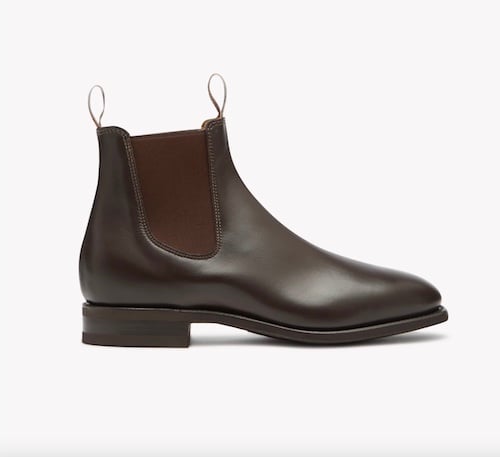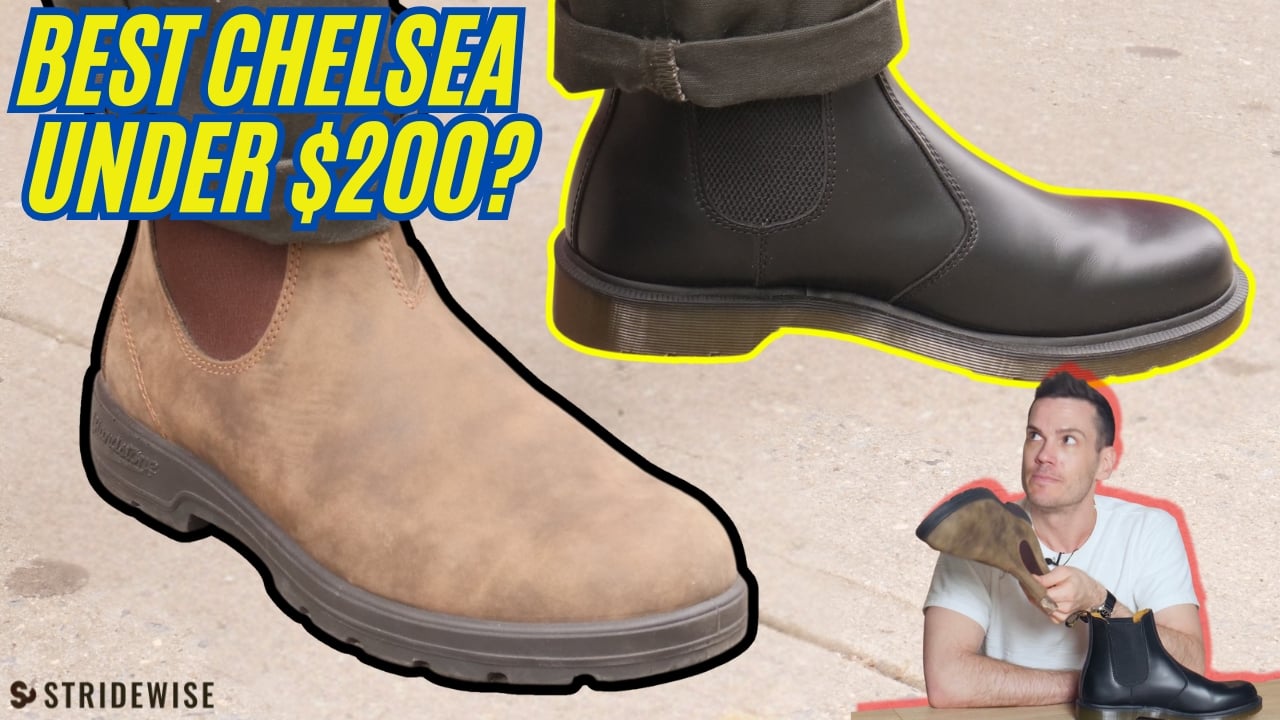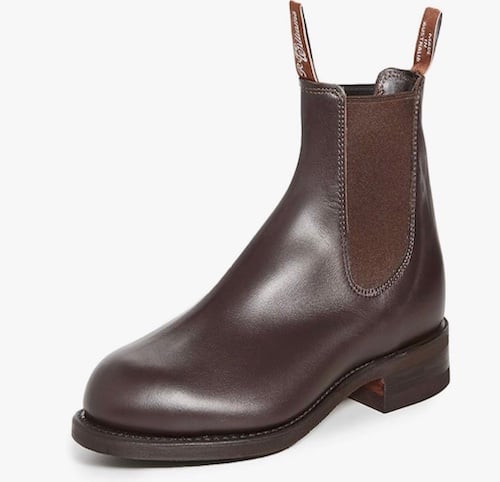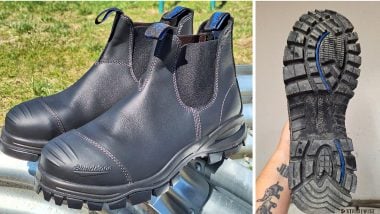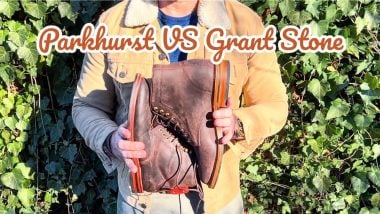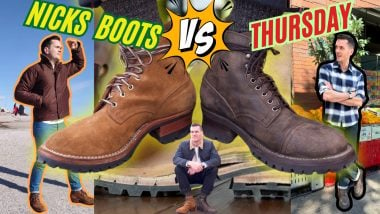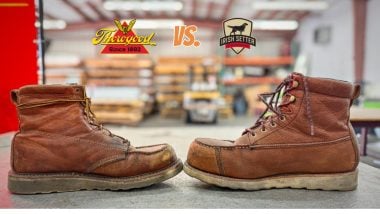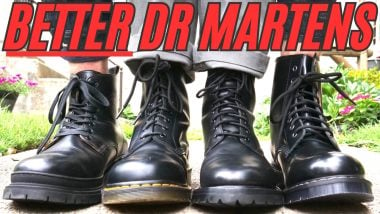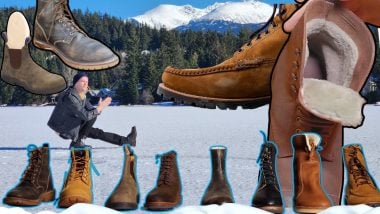R.M. Williams vs Blundstone Chelseas | Australia’s Greatest Boot Battle
I’m based in New York, but I’m originally from Australia, so I’m thrilled to share perhaps the most Australian review I’ll ever write. (Even more so than the one about the kangaroo leather boots I designed.)
While Americans enjoy countless kinds of boots, the nation of Australia is a young one, and when they discovered the Chelsea boot, pretty much the entire country went: “Great, why buy any other boot?”
The vast majority of boots sold down under are Chelseas, and here we’re comparing the two best known: R.M. Williams and Blundstone. Even if you’re an American, when you’re looking for the best Chelsea boot, these two names always come up. I own two pairs from both brands.
One might be the best high-end Chelsea, the other might be the best budget, and while that pretty much explains this whole article, let’s break it down further.
Key Takeaways: RM Williams vs Blundstone
R.M. Williams boots cost about $550 and are much longer lasting: they can be resoled, the leather and construction are more durable, and they’re more versatile. Many find they can wear them with suits as easily as with jeans.
Blundstones cost about $210, and while they can’t be resoled, they have softer soles and a more casual shape that might better suit your wardrobe. They’re also made in Asia, while R.M.s are made in Australia, which may be important to you.
Basically, the price difference matches the quality difference.
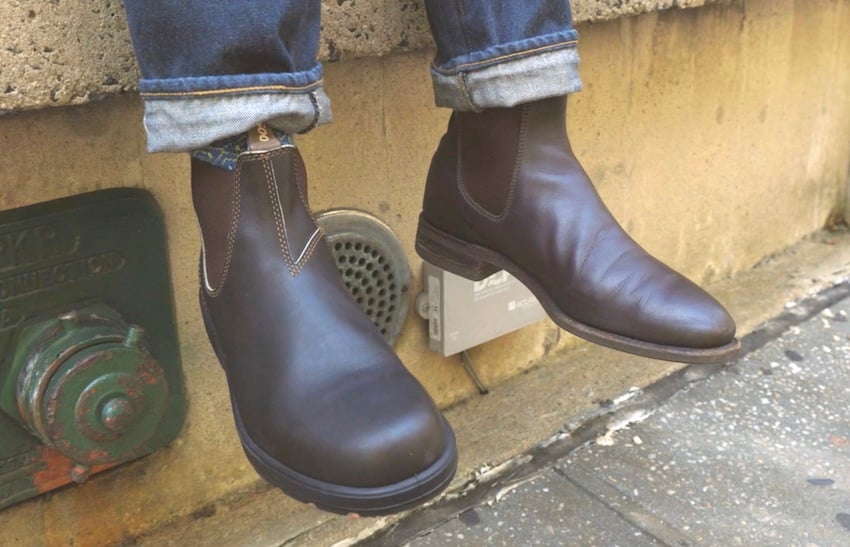
R.M. Williams vs Blundstone: The Price Difference
Normally, I’d start by comparing the aesthetic or something, but that’s because most of my comparisons are between two products that are similarly priced. Here, that’s not the case.
At the time of writing, R.M.s cost well over twice as much as Blundstones.
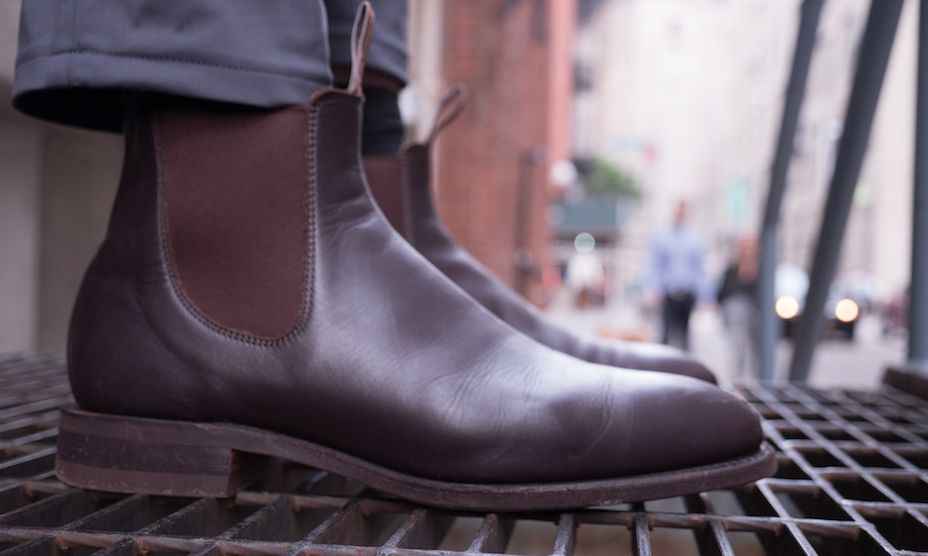
R.M. Williams Price
- $539 – $589
Their bestselling boot (by a mile) is the Comfort Craftsman, and it currently costs $589 on R.M. Williams’ website, though I’ve seen them as low as $539 on Amazon. (Both options in fancy button-form below⬇︎)
This is the most popular boot from Australia's most popular boot brand, made with a single piece of supple yearling leather that combines the best of calf and cowhide.
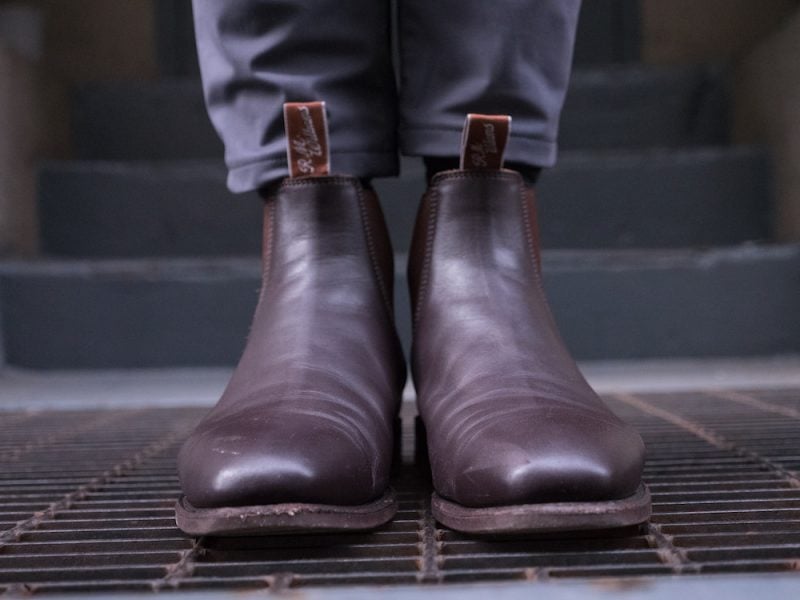
R.M. sells a ton of different boots, but they’re almost all Chelseas, and all their Chelseas are made with a single piece of leather, which is why they don’t vary a ton in price — there’s no “budget line” at R.M. Williams.
(I suggested it when I visited their headquarters in Australia, but they swiftly told me they “won’t compromise”!)
Further Reading

R.M. Williams Review – The National Boot of Australia
Here’s what I thought of Australia’s national boot.
Learn more →
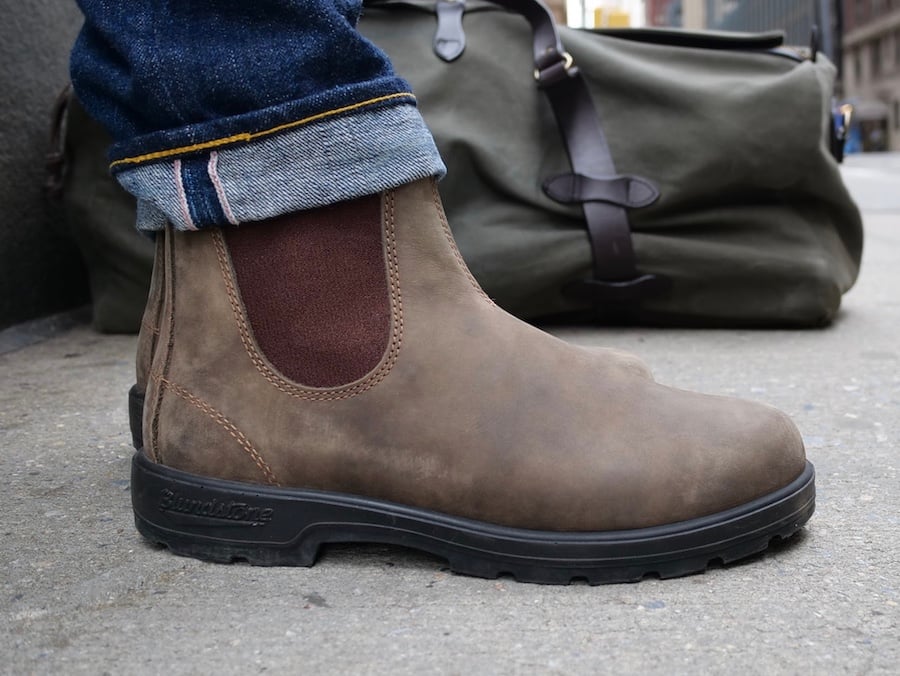
Blundstone Price
- $200 – $210
Meanwhile, the bestselling Blundstones (and the one you’re probably thinking) cost $200 to $210.
Like R.M., Blundstone sells heaps of different Chelseas (and not much else), but while there are slight differences between them, their most popular ones (the #585 and the #550) cost $210, while the #500 is $200.
This water-resistant boot benefits from a cemented construction that makes it lightweight, flexible, shock absorbent, and inexpensive.
Blundstone often tinkers with their price: I’ve seen the #500 drop to $190 and the #585 jump to $220.
I’ll explain the differences between the #500, #550, and #585 at the end of this article, but I don’t want to get distracted from our main mission of comparing the main boots from Blundstone and R.M. Williams, which are the #585 and the Comfort Craftsman, respectively.

Why Do R.M. Williams Cost So Much More Than Blundstones?
- R.M. Williams have much more complex construction: they can be resoled and they’re made with a single piece of leather.
- R.M.’s components are higher quality, sourcing their leather from some of the world’s best tanneries.
- R.M.s are made in Australia; Blundstones are made in Southeast Asia.
Let us count the ways, and the first reason is that even if they were completely identical boots, the R.M.s would cost more.
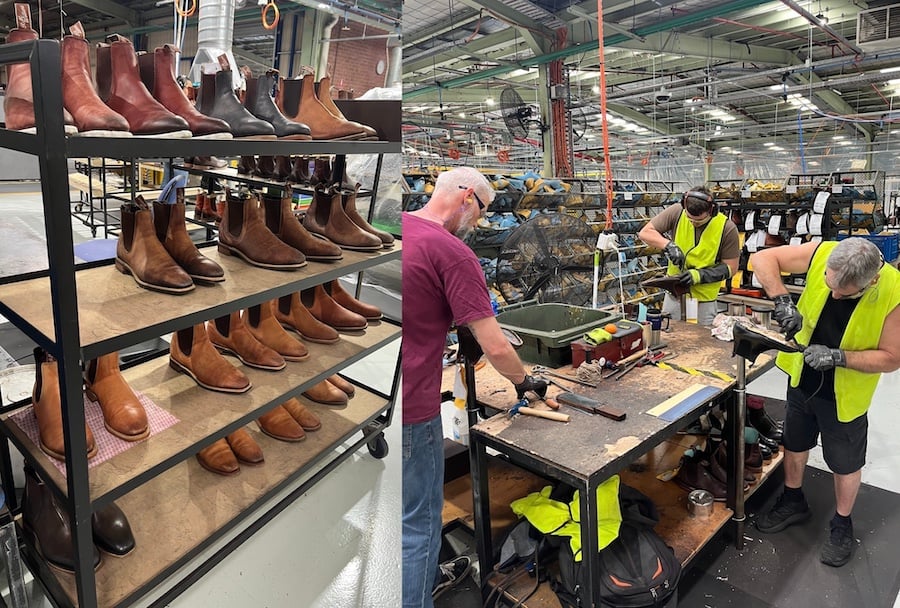
Where They’re Made
For starters, the R.M.s are made in Australia. While your childhood cartoons might suggest it’s a nation of little more than kangaroos and sand, the United Nations actually considers it a more developed country than the U.S., and they have a whopping minimum wage of AUD24.95 per hour.
The Blundstones are made in (deep breath) Vietnam, India, China, Mexico, or Thailand.
They’re not super forthcoming about where each model is made, but my #585s are made in Thailand. This doesn’t mean yours will be; I think this is the kind of company where multiple places will make the same product.
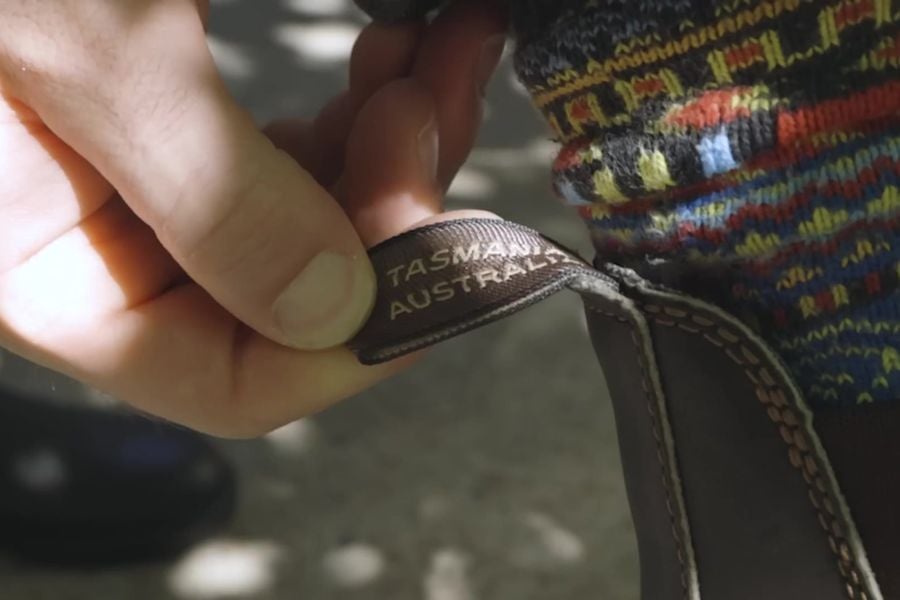
“Isn’t Blundstone Australian?”
The company is, but most of their boots aren’t made there.
“But the pull tab says ‘Tasmania, Australia’ on it!”
I know, right? It’s pretty misleading.
Further Reading
Blundstone vs Dr. Martens | Battle of the Cheap Chelsea
Docs are better known for their combat boots, but since they have a similar price and style as Blunnies, I filmed this comparison. Learn more →
How Their Leather’s Different
Two things to underscore here: one is that R.M. Williams are made with a single piece of leather that’s sewn together at the heel.
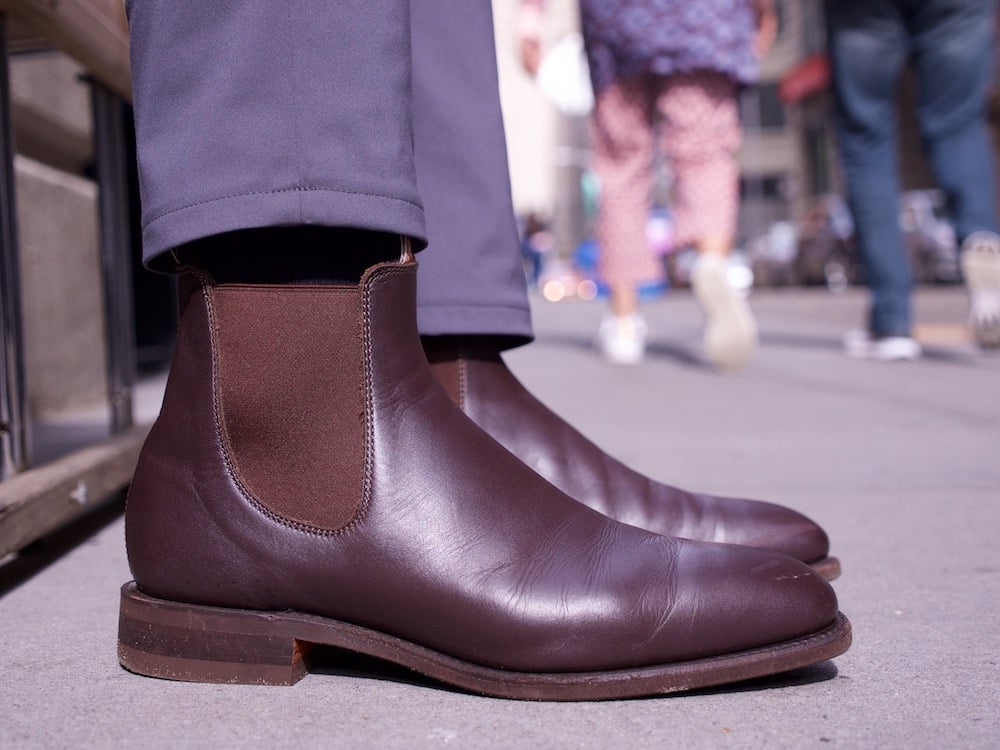
R.M. Williams Are “Wholecut”
Even among expensive Chelseas, a “whole cut” design is very rare, and it’s not cheap. It means you need one big piece of unblemished leather, and you can’t use up smaller pieces of scrap leather.
People disagree about whether a Chelsea being “whole cut” matters for comfort or durability. The argument is that when it’s one piece of leather, it’ll conform to your foot bette,r and there are fewer places for stitching to fail.
Whether or not there’s a practical difference for the average dude, it remains true that being one piece of leather with no seams under the elastic makes for a cleaner look. And, look, it also signifies to other people that your boots weren’t cheap. It’s a status symbol, but a quiet one!
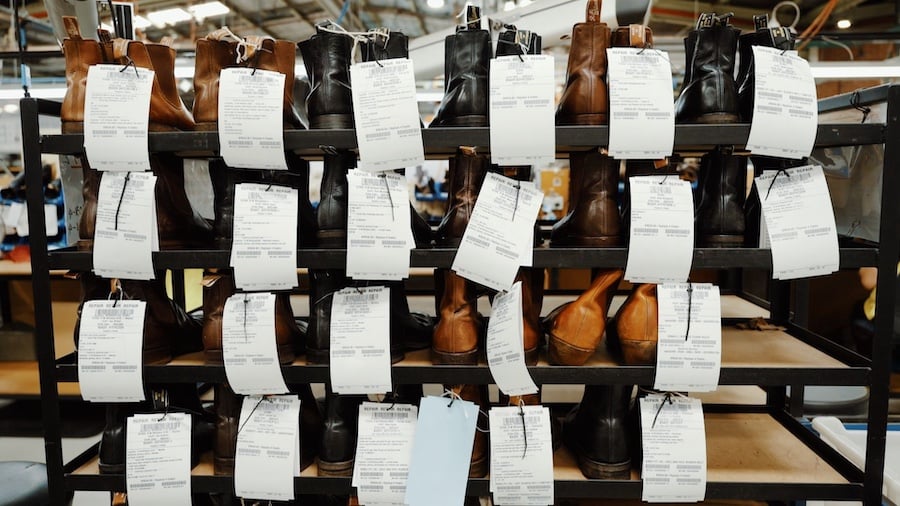
R.M. Williams Use Nicer Leather
It’s not just that they’re wholecut, it’s that they use the kind of leathers that age beautifully and are sourced from some of the world’s best tanneries (although they keep mum about where their best known yearling leather comes from!).
Blundstone uses cheap leather from no-name tanneries that doesn’t age well because it’s so thin and so heavily corrected (this means it’s been smoothed down, eliminating the natural character of the skin you get in “full grain” leather).
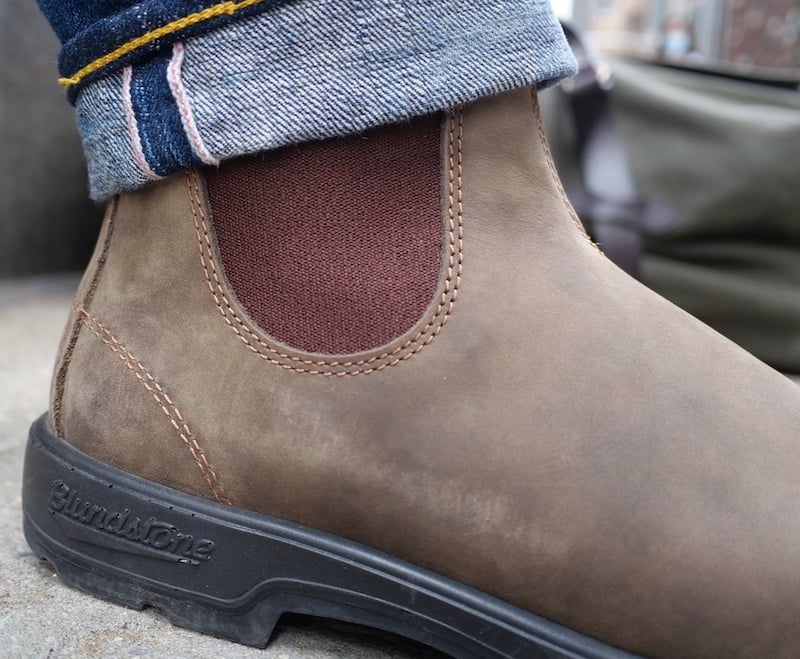
I’m not against leather being corrected (Chromexcel, everyone’s favorite boot leather, is slightly corrected), but the leathers I’ve seen on Blundstone are heavily corrected, thin, and cheap.
I’m not saying the leather will come apart like wet paper, and there’s an argument that you shouldn’t buy nice leather if they’re on boots you can’t resole. The leather will last the life of the boots just fine, the leather will do. It’s just not nice. For many people, that’s a totally fine compromise to make if you’re saving several hundred dollars. Nothing wrong with that!
Look, I’m not trying to make this whole comparison a list of reasons “why R.M. Williams is great,” because neither brand is priced the same. It’s fine that Blundstones aren’t as “nice” because they cost a lot less. Both are priced appropriately! I’m just explaining why.

How They’re Made: R.M. Williams vs Blundstone Construction
- R.M. Williams are Goodyear welted, so they’re water-resistant and can be resoled many times
- After a few resoles, R.M. Williams can relast the boots for customers, basically “resetting the clock” on the resole counter.
- Blundstones are cemented, so they’re cheaper, lighter, more flexible, and also pretty water resistant, but they won’t last as long
R.M.s can not only be resoled, but the brand will also relast them. That’s an advanced operation that only the people who first made the boots can pull off. A cobbler at their workshop told me he recommends a relast after the boots have been resoled three or four times, and he showed me a boot that he had relasted more than once.
But another advantage of a Goodyear welted boot like R.M. Williams is that when you need a resole (and not the advanced relast operation), any cobbler can do it for you. There are some forms of construction that certain cobblers won’t want to resole, while others specialize in it, but all of them can resole a Goodyear welt.

Different R.M. boots have different builds: all Goodyear welted boots have a layer of cork that conforms to your foot’s shape and offers rudimentary shock absorption. But the Comfort Craftsman has a couple of layers of foam underfoot to improve shock absorption further and decrease break-in, while the “Heritage” and “Signature” Craftsman boots have leather insoles and outsoles. Personally, I prefer the latter, but the Comfort Craftsman is by far the bestseller.
In any case, the complex construction of R.M.s means the fit improves the more you wear them: the cork and leather molds to your foot’s shape, producing a kind of comfort that’s unique to nice footwear — and it’s something you won’t get with Blundstones.
This is the most popular boot from Australia's most popular boot brand, made with a single piece of supple yearling leather that combines the best of calf and cowhide.
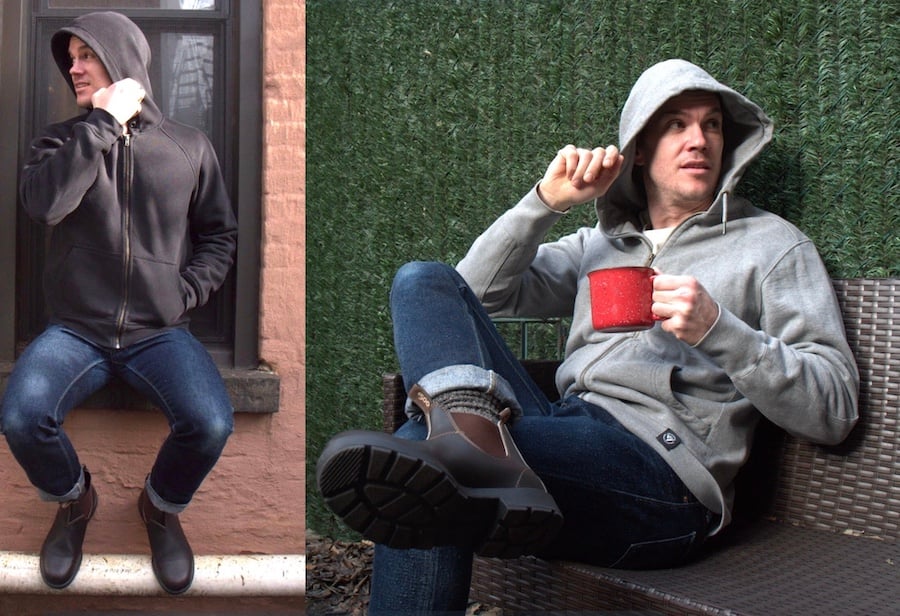
It’s Not So Bad That Blundstones Aren’t Resoleable
If these boots cost the same, it would not be okay that Blunnies can’t be resoled, but they’re cheap enough — plus, there are some other advantages to their construction.
When compared to the resoleable kind, cemented boots are typically lighter, more flexible, have less of a break-in, and they’re sometimes even more water resistant. (You’ll almost never find a waterproof boot that’s resoleable; most folks have to pick one or the other. Blunnies aren’t waterproof, but I’m just saying.)
Blundstones also put a lot of work into making soles that absorb shock well, which is an element that most Goodyear welted boots, like R.M. Williams, fall short in. The bestselling 585 are made with a TPU outsole, extra impact protection in the heel, and a removable insole if you want to replace it with your own.
As is, the 585 absorbs up to 90 percent of energy at high-speed impact. Expensive boots do not do that. The materials are just different.
In short, Blundstones are better for guys who prefer boots that are closer to sneakers.
This water-resistant boot benefits from a cemented construction that makes it lightweight, flexible, shock absorbent, and inexpensive.
Sizing: R.M. Williams, Blundstone, and the Weird World of British Sizing
- Both are Australian, so they both use UK sizing
- Subtract one from your US Brannock size, or 0.5 from your usual US boot size
- Blundstone’s fit is roomier than R.M., but R.M. sells wide sizes
Go to a shoe store and get your foot sized on the device they use to measure feet; it’s called the Brannock device.
The reason you should do this is that most guys don’t know their shoe size; they just identify with the biggest sneaker they’ve ever fit into.
But your sneaker size is probably 0.5 larger than your true size, which is 0.5 larger than your boot size, which is 0.5 larger than your Australian boot size.
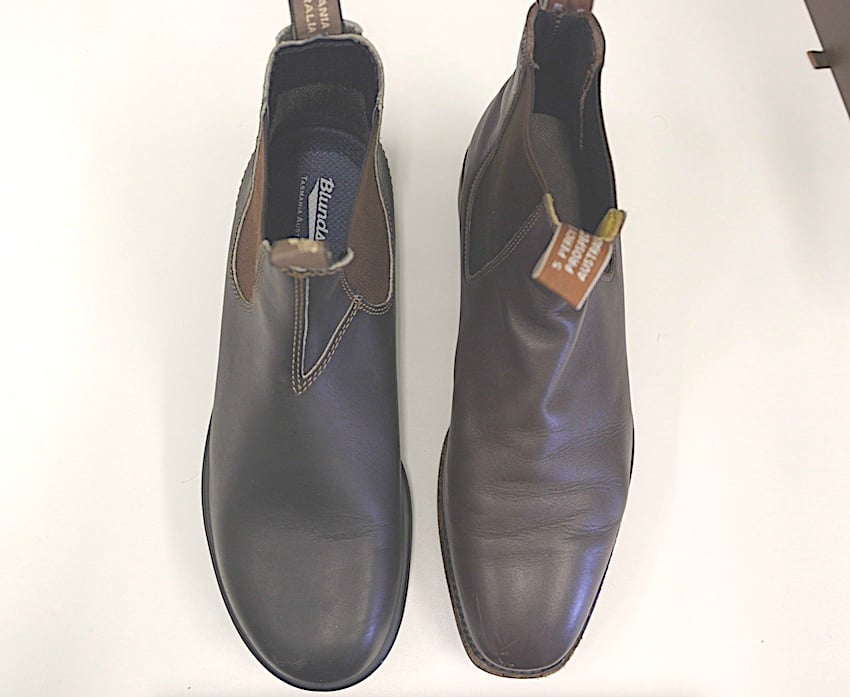
In other words, these are my sizes:
- US sneaker: 11.5 or 12
- US Brannock size (a.k.a. “true size”): 11.5
- US boot size/ UK sneaker size: 11
- UK/Australian Boot size: 10.5
As you can see in the picture above, Blundstones have a wider toe. Most Blundstones don’t come in wide widths; they instead suggest you size up 0.5 from whatever size you’ve landed on from my advice. That’ll probably work fine.
While Blundstones are roomier, R.M. Williams offers you more control over your fit because:
- Many boots come in wider fits
- They sell many Chelseas with different toe shapes
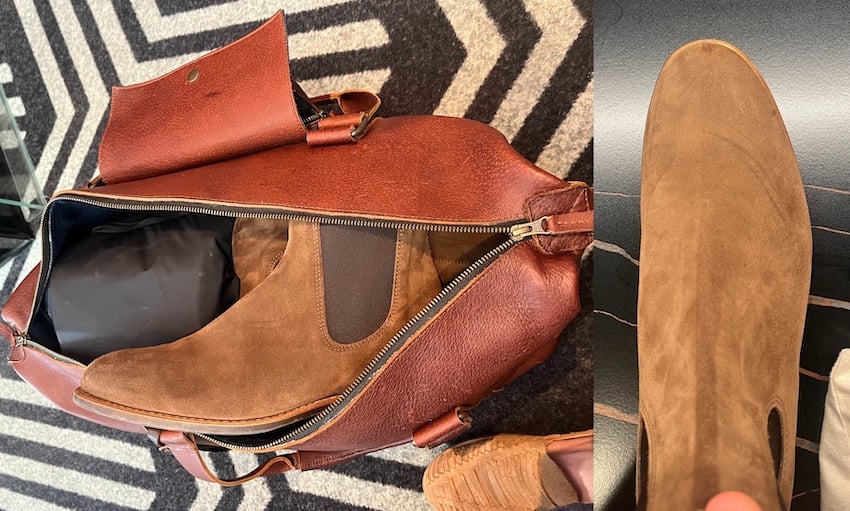
The Craftsman is famous for its chiseled toe, which is not as narrow as it looks (your foot ends long before the toe converges), but check out the Gardener and the Turnout for two different, wider, rounder toes that you might prefer.
A wholecut Chelsea that's resoleable, made in Australia, and available in a rounder, slightly roomier toe than R.M. Williams' best known Craftsman Chelsea.
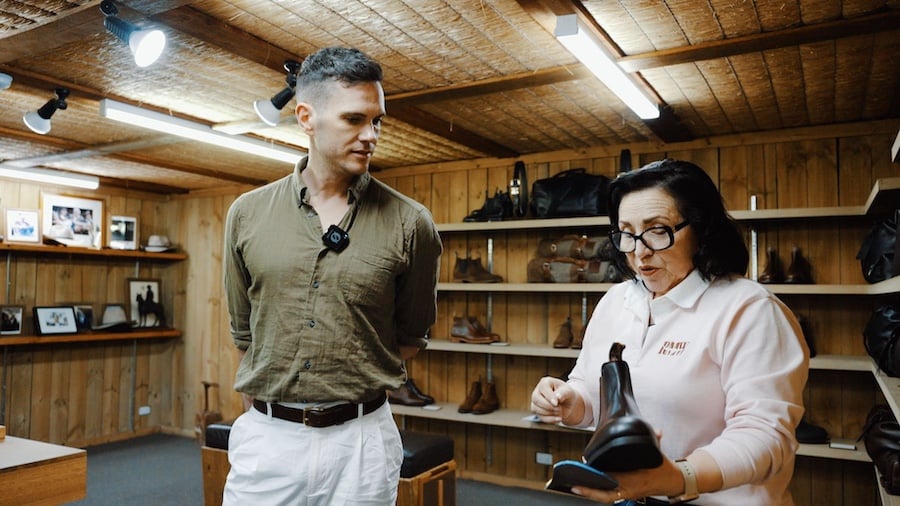
R.M. Williams vs Blundstone: Which Is Better?
So which is the better boot? Look, it depends on what you want.
Blundstone is the right pick if you want a boot that’s one of these:
- casual
- inexpensive
- lightweight
- shock absorbent
R.M. Williams is the right pick if you want a boot that’s:
- longlasting (like, decades)
- versatile but classy
- fits and looks better with wear
- made in a developed country
Plus, a resoleable boot will ultimately save you more money than having to buy another boot once your cemented one wears out.
But they’re just completely different boots for different use cases and different wallets. Which is your pick?
(The article is finished now, but below I’m doing a breakdown of the three best-known Blundstone boots)
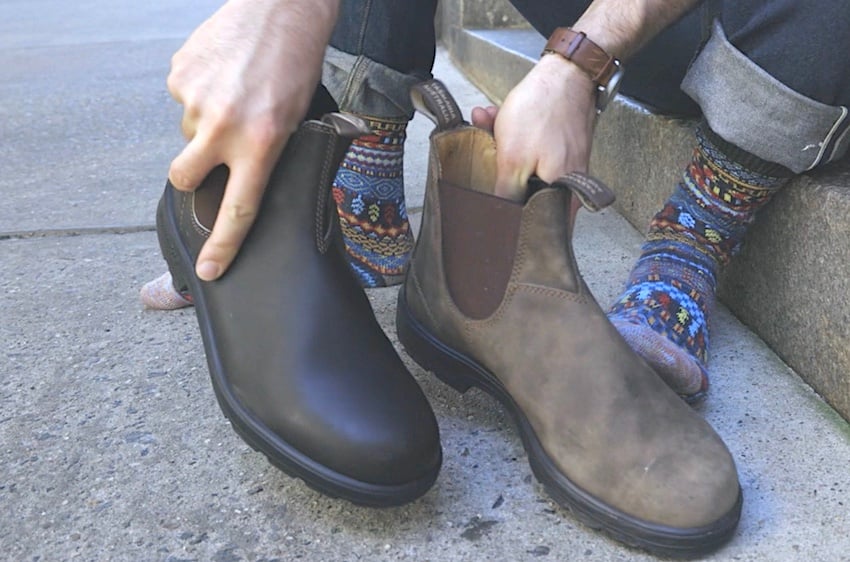
Blundstone’s 500 vs 550 vs 585
- The 500 is $10 – $20 cheaper than the 550 / 585 because the pricier boots have slightly better shock absorption
These three are the bestsellers from Blundstone, with the 585 the most popular. I know we’re here to compare with R.M. Williams, but I wanted you to know how these compare in case you weren’t defaulting to their best boot, which is the 585. I’m acting like that’s an objective answer, and… you know what, it is.
550 vs 585: It’s Just the Leather
The 550 and 585 are made the same way; they just have different leathers. Consider them different colors of the same boot: the 550 is a consistent dark brown, while the 585 is the one made in an extra oily “pull up leather”, meaning it has more color variation. It makes it more casual, but it also makes it look cooler, and since none of Blundstone’s Chelseas are dressy, it makes sense that customers would gravitate toward the 585.
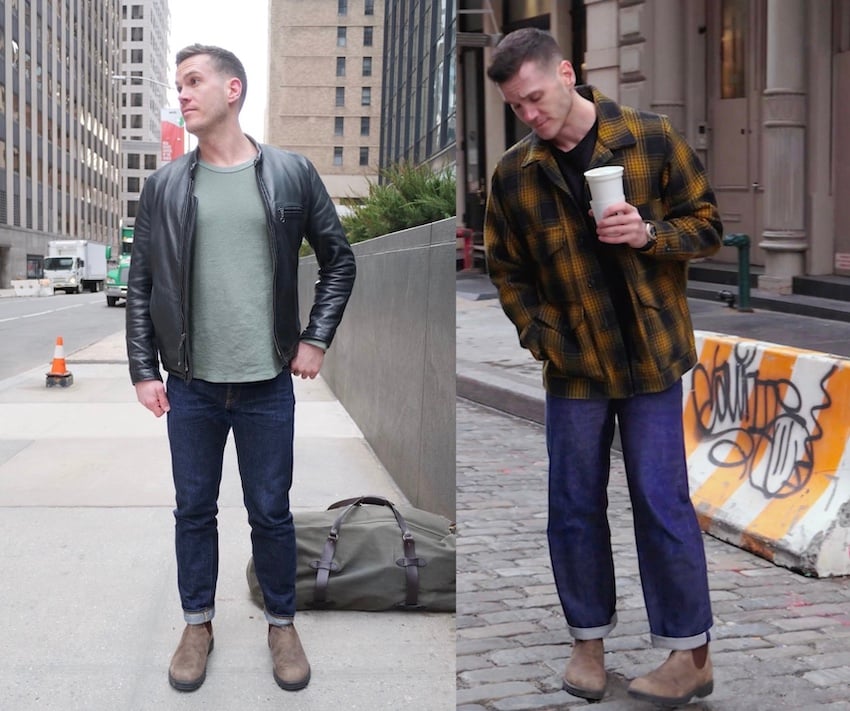
the 585 is the closest you’ll get to “cool old leather” on a Blundstone,
Pull-up leather is sort of the most casual of the casual leathers, as it can be worn harder, and its dynamic color makes it look more like well-loved boots. I’ll also note that Blundstone’s leather isn’t great quality, and the 550 isn’t going to look like a really cool old boot as it ages — the 585 is the closest you’ll get to “cool old leather” on a Blundstone, another reason people like it.
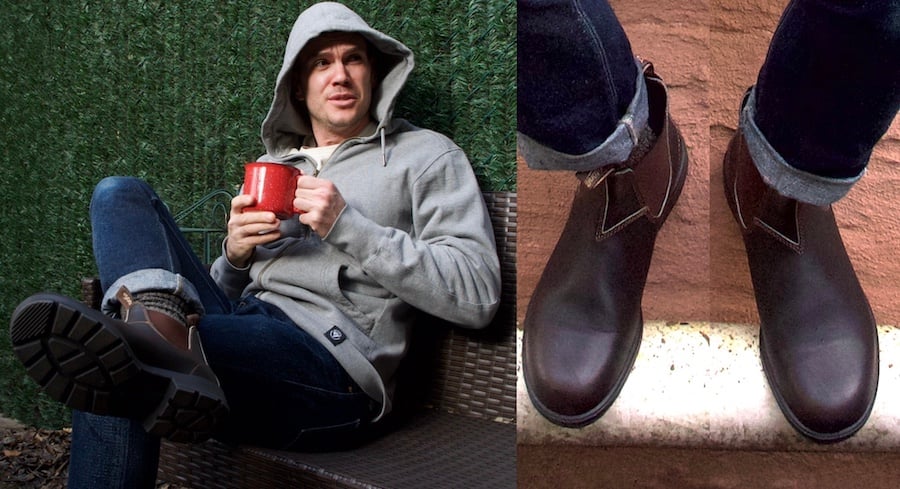
Blundstone 500 vs 585 and 550
There’s no huge difference in quality here, but the main difference in these two “generations” of Blunnies is that the 585 and 550 have better shock absorption: more foam placed more strategically in more places, memory foam in the heel, that kind of thing.
The 585/550 also has leather lining, and in some places, most notably the heel counter, the 500 has a single row of stitching while the others have two.
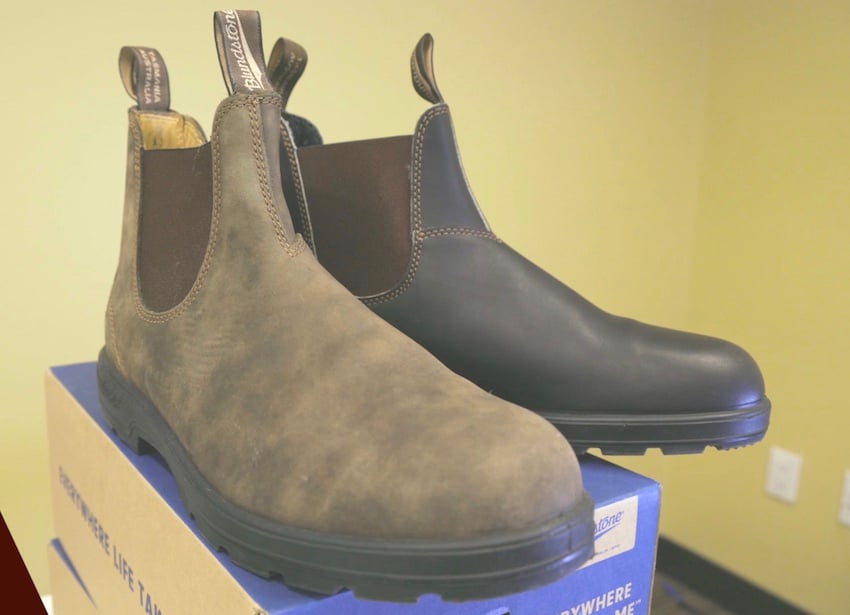
Given that these are casual boots and given I’ve worn both generations, I think you’re unlikely to notice a big difference as far as durability goes. The shock absorption will matter the most to the average dude, but probably only if you’re working in boots or spending a lot of time on your feet.
Personally, I prefer the 585 because I think the single rows of stitching on the 500s look weird. I think every boot I’ve got has at least two rows!
This water-resistant boot benefits from a cemented construction that makes it lightweight, flexible, shock absorbent, and inexpensive.

